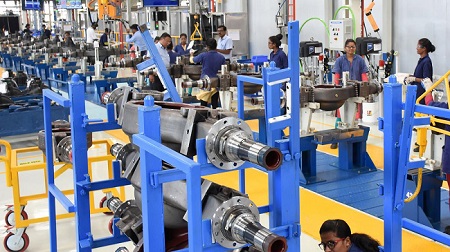Prospects for Semiconductor Plant in Mysuru Diminish Amidst Technical Challenges

The ambitious plans for establishing a semiconductor manufacturing plant in Mysuru are facing significant hurdles, making the realization of this venture increasingly unlikely. Technical challenges, supply chain complexities, and regulatory issues have cast doubts on the feasibility of the project. The proposal, which gained attention earlier this year, aimed to position Mysuru as a potential hub for semiconductor production, capitalizing on the growing global demand for advanced microchips. However, experts have voiced concerns over the city's readiness to host such a complex and high-tech facility.
Sources close to the development indicate that the lack of infrastructure tailored to semiconductor manufacturing is a substantial barrier. Specialized facilities, such as clean rooms with stringent contamination controls, are essential for producing high-quality chips. These requirements demand significant investments in both construction and equipment, posing a challenge to the project's financial viability. Additionally, the global shortage of critical components necessary for semiconductor production has cast a shadow over the feasibility of the venture. With supply chains already strained due to geopolitical tensions and the ongoing pandemic, sourcing the necessary materials has proven to be a daunting task. Industry insiders suggest that relying solely on local suppliers is not a sustainable solution, as it may result in production delays and quality inconsistencies.
Regulatory hurdles have further dampened the prospects of the semiconductor plant. Environmental clearances, compliance with labor laws, and navigating through local bureaucratic processes have slowed down the project's momentum. Experts emphasize the importance of a conducive regulatory environment to attract investments and foster growth in the semiconductor sector. While the semiconductor plant's original vision held promise, stakeholders are now considering more pragmatic alternatives. Some experts propose collaborating with existing semiconductor manufacturing hubs to access their established infrastructure and supply chains, thereby mitigating the challenges faced by starting from scratch.
As the discussion around the semiconductor plant continues, it is evident that a comprehensive and strategic approach is required to address the technical, logistical, and regulatory complexities. Whether Mysuru will eventually emerge as a semiconductor manufacturing hub remains uncertain, but the journey towards this goal has shed light on the multifaceted nature of establishing high-tech industries in emerging markets. In the face of these challenges, local officials and investors are reevaluating their strategies, aiming to strike a balance between ambition and practicality. The semiconductor plant, if realized, has the potential to transform Mysuru's economic landscape; however, the road ahead is fraught with obstacles that demand innovative solutions and collaborative efforts.